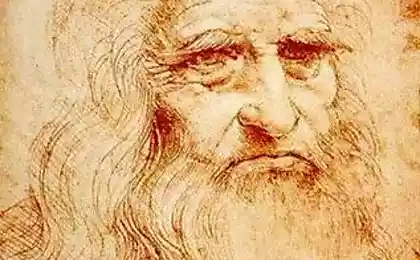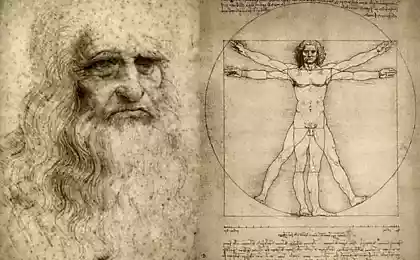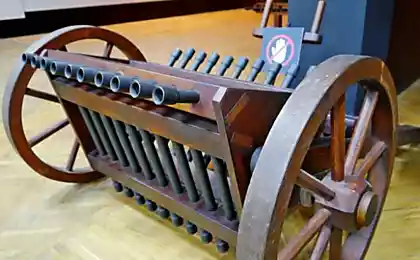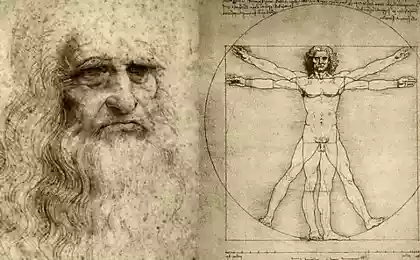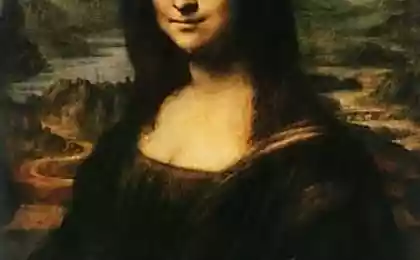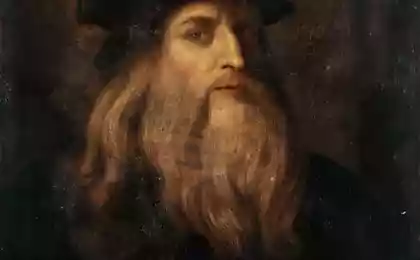2154
Parable - the Last Supper, Jesus and Judas - Leonardo da Vinci.

When you create a fresco "The Last Supper" by Leonardo da Vinci faced enormous difficulties: he had to portray Welcome, embodied in the image of Jesus and Evil - in the form of Judas, who decided to put him on this meal. Leonardo interrupted in the middle of the work, and resumed it only after it has found the perfect model.
One day, when the artist was present at the concert choir, he saw in one of the young singers of the perfect image of Christ. This was a chorister Pietro Bandineli. Invited him to his studio, the artist has made him some sketches and studies.
Forty years later, in search of a model for Judas, the artist faced with a tramp, just released from prison, and on this stroller Leonardo stopped finally, his choice. Face of Boe was of all traces of sin, animal instincts committed iniquity.
When Leonardo finished his work, the beggar, who by this time already a little sobered, opened his eyes, saw a sheet, and cried out in fear and anguish:
- I've seen that picture before!
- When? - Leonardo asked, puzzled.
- Three years ago, even before I lost everything. At that time, when I sang in the choir, and my life was full of dreams, some artist wrote to me of Christ.
FAQ: The painting was begun in 1495 and completed in 1498; work was intermittent. Leonardo wrote the "Last Supper" on a dry wall instead of wet plaster on, so is not painting a fresco in the true sense of the word. Mural can not be changed during operation, and Leonardo decided to cover the stone wall layer of resin, plaster and putty, and then write on this layer in tempera. Due to the method chosen painting began to collapse a few years after the end of the work.
Already in 1517 mural paint started peeling off. In 1556 Leonardo's biographer Vasari described the painting as the destruction and so much spoil that figure was almost impossible to find. In 1652 painting has been done through the doorway, and later laid a brick; it can be seen still in the middle of the base of the painting. Early copies give reason to believe that Jesus' feet were in the position to symbolize the impending crucifixion. In 1768, painted over to protect hung the curtain; Instead, it covers the evaporation of moisture from the surface, and threw back the curtain when she scratched the paint peeling off.
The first restoration was undertaken in 1726 by Michelangelo Belotti, who filled the place of the missing oil paint and then covered with lacquer mural. For a long time this restoration was not enough, and the other was made in 1770 by Giuseppe Mazza. Mazza scraped job Belotti, and then thoroughly rewritten painting: he rewrote all persons, except for three, and then was forced to stop work because of public anger. In 1796, French troops used the refectory as the armory; They threw stones at the painting and climbed ladders to scratch my eyes to the apostles. Then, the refectory was used as a prison. In 1821 Stefano Baretstsi known for his ability to very carefully remove the frescoes from the walls, he was invited to transfer the painting to a safer place; he was seriously injured central section, before realizing that the work is not a fresco by Leonardo. Baretstsi attempted to glue to attach back to the damaged areas. From 1901 until 1908 Luigi Cavenaghi was the first time a thorough study of the structure of the painting, and then proceeded to Cavenaghi its clearing. In 1924 Oreste Silvestri implement further clearing and stabilized some of the plaster.
During World War II, August 15, 1943, a refectory bombed. Sandbags prevent fragments of bombs in painting, but could have a harmful impact vibration.
In the years 1951-1954 Mauro Pellicholi fulfilled another restoration with clearing and stabilization.
In the 1970s, the mural looked heavily damaged. From 1978 to 1999, under the direction of Pinin Brambilla Barsilon carried out large-scale restoration project, the aim of which was to stabilize the constant painting and getting rid of the harm caused by dirt, pollution and wrong restorations XVIII and XIX centuries. Since the movement of the painting in a more relaxed environment is impractical in such an environment, sealed, controlled climate regime, the refectory was transformed herself for what had to wall up the windows. Then, to determine the form of the original painting was done a detailed study using infrared reflectoscope and studies of core samples, as well as original boards of the Royal Library of Windsor Castle. Some areas are not considered to be restored. They re-wrote watercolor muted colors, to show without distracting the viewer's attention, they are not the original work.
The restoration took 21 years old. May 28, 1999 painting was open to view. Visitors should book tickets in advance and can spend only 15 minutes. When the mural was unveiled, raised a heated debate about the strong change colors, tones and even ovals persons in several shapes.
